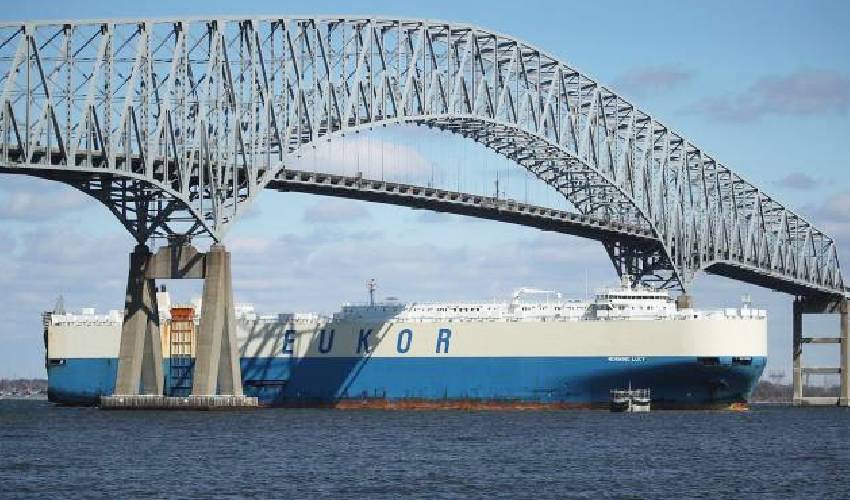Cranes began arriving at the site of the catastrophic collapse of a bridge over Baltimore Harbor on Thursday as authorities moved into the cleanup phase of recovery and warned of extensive work before America’s major port can reopen.
Machinery will be deployed in a delicate operation to remove the twisted steel remains of the Francis Scott Key Bridge from where it fell into the Patapsco River — blocking the entrance to Baltimore Harbor — after a massive cargo ship slammed into it Tuesday. span.
The Army Corps of Engineers is “moving the largest crane on the East Coast to Baltimore to help us,” Maryland Gov. Wes Moore told reporters Thursday night.
Coast Guard Rear Admiral Shannon Gilreath outlined the intense work ahead: “Before we can go into lifting, we have to … figure out how to cut the bridge into the right size pieces so we can lift them with cranes” out of the water.
Due to the complexity and potential risks, efforts to recover the bodies of the four still missing men were called off.
“The water is so dark and the debris is so thick that most of the time our divers can’t see more than a foot or two in front of them,” Moore explained.
Even as crews look ahead to the recovery, “we are … incredibly sensitive to the idea that this is also a resting place for four fathers, four brothers, four sons,” senior White House official Tom Perez previously told MSNBC. day.
The missing men, all immigrants from Latin America, are believed to have been killed when the Singapore-flagged 1,000-foot container ship Dali lost power and crashed into a bridge pillar.
Almost the entire steel structure – which is passed by tens of thousands of motorists every day – collapsed in seconds.
The workers were part of an eight-man road repair crew on the night shift. Two were rescued shortly after the collapse and two bodies were found Wednesday.
“Our hearts go out to the families,” said Moore, whose office set up a relief fund to raise money for the victims’ families. “We are very sorry for this tragedy.
He urged patience, adding: “This work (rebuilding) will not take hours, this work will not take days, this work will not take weeks.”
“We have a very long way to go.
-A significant loss –
Video footage from the National Transportation Safety Board (NTSB) showed investigators boarding the disabled Dalí on Thursday, its decks covered in crumbling concrete and tangled scaffolding from the fallen bridge.
NTSB and Cargo Guard officers in white helmets are seen taking photos and taking notes as they survey the wreckage before going through the intact part of the ship.
The Federal Highway Administration said it would honor the Maryland Department of Transportation’s request for an initial $60 million for what Moore called “immediate response efforts and laying the groundwork for rapid recovery.”
“The federal government is committed to providing all necessary resources to rebuild the bridge,” agency administrator Shailen Bhatt said in a statement.
The disaster could result in the largest marine insurance payout ever, according to the head of insurance giant Lloyd’s of London, Bruce Carnegie-Brown.
“It looks to me like a very substantial loss, potentially the largest marine insured loss ever, but not outside the parameters that we plan for,” he told CNBC.
The port’s closure has also raised concerns for the local economy – the port supports 140,000 jobs – and the wider national supply chain.
According to U.S. Transportation Secretary Pete Buttigieg, Baltimore is the nation’s largest port for handling vehicles, including cars and heavy farm equipment. Approximately $100 to $200 million in value passes through the port daily.
Its reopening is “our number one priority,” Gilreath told the Coast Guard.
Up the coast from Baltimore, the Port Authority of New York and New Jersey plans to take on additional cargo to help blunt the effects of the supply chain, the states’ governors pledged in a joint statement Thursday.





